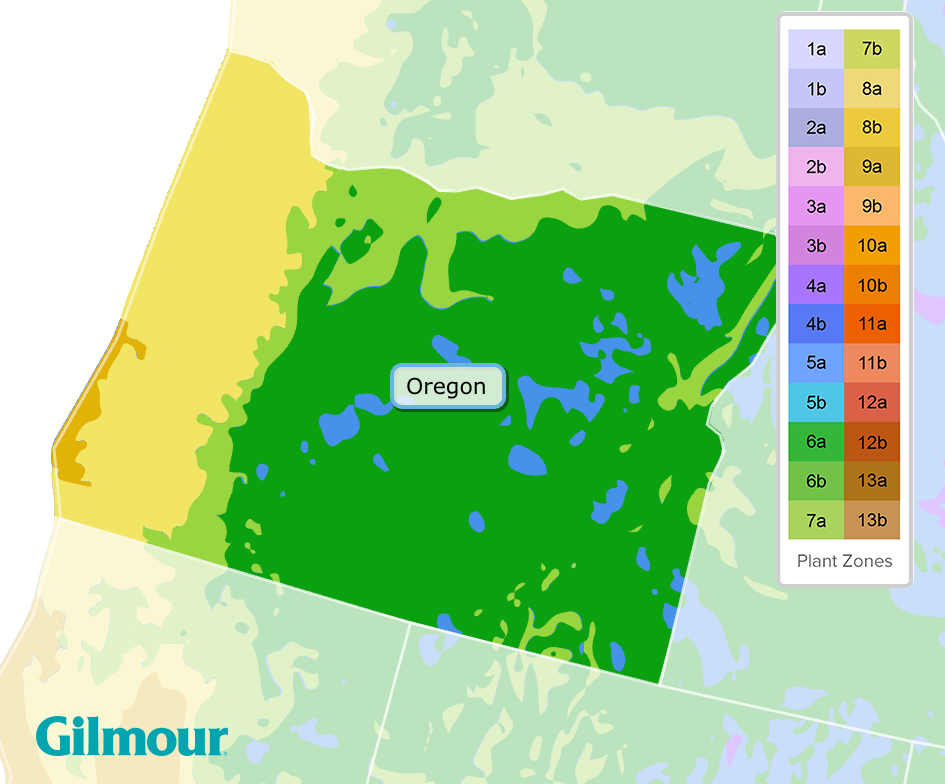


The majority of the western region of Oregon has a temperate oceanic climate, while the eastern side of the state has a cool arid climate. Western Oregon has wet winters, overcast, foggy, cloudy skies and a lot of rain and snow. Occasionally, this half of the state will become very cold from the Arctic cold waves. Summers are relatively cool. In contrast, eastern Oregon, or the high desert region, has much drier weather and sees significantly less rain, hotter summers, more snow and colder winters. The amount of rainfall and precipitation depends on the planting zone location and widely varies. Regions that have the most precipitation can get up 200 inches a year, while in the areas that are the driest, like the Alvord Desert, rainfall can be as little as 5 inches. Snowfall is similar, ranging widely too. The coastal region may see anywhere from no snow to 1 to 3 inches a year, and further inland can be closer to 5 to 10 inches. Heaviest snowfall occurs east of the Cascades where there can be 15 to 75 inches of snow annually. Average annual temperatures range from low 60s in the summer to mid 30s in the winter.
The Oregon growing zones range from 4b to 9b. Growing zones are also referred to as planting zones. They were developed to help gardeners figure out which plants, flowers or vegetables will do best in a specific region. Zones help you know what plants are most likely able to withstand winter conditions. But they are useful for more than just knowing what to plant. Zones also help to determine when to plant, too. Oregon planting zones are based on both first and last frost dates. It is important to note that you only want to grow plants rated for the Oregon planting zone you are planting in or lower. An example is if you live in zone 4b, you can safely choose plants rated zones 1 through 4. Do not plant anything rated for a higher zone, like 8a. The reason it is fine to go to a lower zone, but not higher, is because plants rated for a much higher zone will likely not be able to survive winter conditions of the zone you are planting in. Find your growing zone with Gilmour’s Interactive Planting Zone Map.
Oregon has so many plants, vegetables and flowers to choose from. Popcornflower, awned melic, azaleas, baby blue eyes, hupa gooseberry, lady fern, marsh violet and literally hundreds more are native to the area and will grow very well. Vegetables that thrive in the area include artichokes, asparagus, cauliflower, peas, potatoes, tomatoes and summer squash.
From the moment you pick it up, you’ll notice these nozzles are different. Designed with mobility in mind, they feature Gilmour’s innovative Swivel Connect. The swivel allows the nozzles to pivot without
Learn MoreWinter Gardening Tips to Tackle in the Off Season
As winter marches on, avid gardeners become more and more eager to get growing. While you may not be able to dig your spade into the soil just yet, there is plenty
Learn MoreDesign a Beautiful Drought Resistant Yard
Hot weather and drought-like conditions don’t mean a beautiful yard and garden is out of reach. Learn everything you need to know about drought tolerant landscaping, including the best type of plants,
Get the Dirt